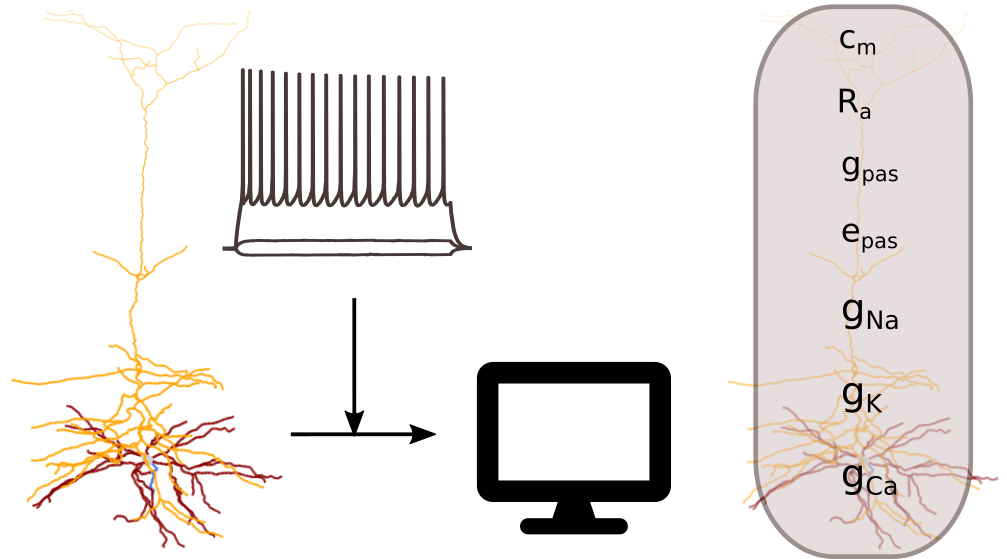Research snapshot
Here is a highlight of some of the projects I have worked on over the past few years. The central theme being using optimization, statistical modeling, machine learning, control and dynamical sytems to gain a deeper understanding of neural circuits.
Biophysically detailed models of single neurons

Using morphology (diameter and length of digitally reconstructed segments) and electrophysiology (in-vitro recording of the membrane voltage under a standardized set of current protocols) data to constrain a multi-compartmental model of single neurons.
-
Distribute a set of active conductances along the entire morphology (hence, called all-active models) and fit the maximal values for these conductances via a multi-objective optimization framework using evolutionary algorithms.
-
Do the optmized conductances preserve information about the broader cell-type identity?
-
Establish causal relationship between different modalities of data - are the ion channels indicative of the genetic signature of the underlying cell and how these channels affect electrophysiological properties e.g., shape of the action potential, Afterhyperpolarization(AHP).
Simulate networks of neuron models to probe computational power, connectivity rules, and extracellular signature of cell classes

-
Probe computational properties by simulating biophysically realisitic models of neurons and furthermore networks under synapses, resembling real physiological states. Can we classify neurons according to their computational bandwidth - within species across regions, cross species in homologous regions?
-
Examine efficacies of unique structural connectivity properties of specialized cells (Chandelier), as seen in the Electron Microscopy (EM) data, by simulating single neuron/networks under equivalent synapse configurations.
-
Use experimental (in-vivo) and simulated extracellular signature of neurons along recording depth to link muti-modal data and furthermore infer cell-types.
Control theoretic approach to design stimulation patterns for neural circuits


Neurocontrol : Leveraging control theoretic principles to systematically perturb neural circuits.
-
Fit a point process generalized linear model to the neural spiking data and using this model to design exogenous stimulation for target spiking patterns in the underlying system.
-
Apply systems and optimal control theory to design inputs for non-linear dynamical systems.
-
A generative decision model hypothesis that explains the neural dynamics in experimental data for locust olfactory circuits.
